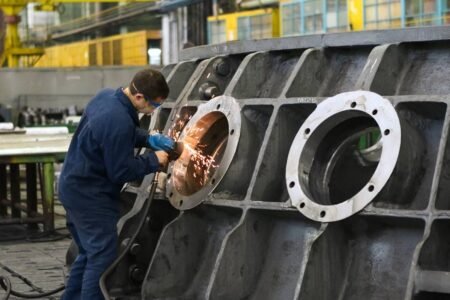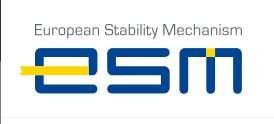A European Commission report published on 18 November 2008 shows that mobile workers from the countries that joined the EU in 2004 and 2007 have had a positive impact on EU Member States’ economies and have not led to serious disturbances on their labour markets. Workers from the EU-8 as well as Bulgaria and Romania have made a significant contribution to sustained economic growth, without significantly displacing local workers or driving down their wages. Both for the EU as a whole and for most individual countries, labour flows have been limited compared to the size of labour markets and to inflows from non-EU countries.
Advertisement
This is the 20th annual edition of the Employment in Europe report, which has become one of the main tools of the European Commission in supporting EU Member States in the analysis, formulation and implementation of their employment policies.
The Employment in Europe report 2008, as in previous years, addresses topics that are high on the European Union’s employment policy agenda. It gives a comprehensive overview of the employment situation in the EU, as well as an analysis of key labour market issues, including immigration, post-enlargement intra-EU labour mobility, quality of work and the link between education and employment.
Migration from third countries outside the EU to countries in the EU has increased substantially in recent years, rising threefold between the mid-1990s and early 2000s. Indeed, recent non-EU migrants who have arrived since 2000 account for almost one-third of all non-EU migrants of working age. This recent flow of third country migrants has been notably higher (almost 2.5 times) than the recent internal movement of EU citizens between EU countries.
At the same time, the pattern of immigration flows has become more diversified, with a greater influx of migrants from Central and South America and much greater migration to countries in southern Europe than previously. Indeed, third country immigration to southern Europe has now reached similar levels to that to the more traditional immigration countries of northern Europe.
Recently arrived immigrants have contributed significantly to overall economic growth and employment expansion in the EU, with only limited impacts on domestic wages and employment. They are responsible for around a quarter of employment growth since 2000. They have generally been complementary to EU-born workers rather than substitutes, and have added to greater labour market flexibility.
Indeed, they have clearly helped to alleviate labour and skill shortages, tending to be employed in those sectors and occupations where demand has been greatest, in particular at the low-skill end of the jobs spectrum, i.e. in private household, construction, hotel and restaurant sectors, or in elementary, craft and related trades, as well as services and shop and market sales.
Nevertheless, overall there remain considerable challenges in adequately integrating migrants into European labour markets. In most Member States the labour market situation for migrants is substantially worse than that of those born in the EU they tend to have lower employment rates and are often more likely to be unemployed, or are employed in jobs of lower quality or for which they are over-qualified. Recent migrants, in particular women and those from certain regions of origin, face particular difficulties in integrating into the labour market.
Substantial differences are observed across Member States. The new migration countries of southern Europe which have received high flows of labour migration over recent years, seem do a better job of getting migrants into employment, but with greater risk of their being overqualified and exposed to bad matches and precarious employment. On the other hand, the remaining old Member States show a lower rate of migrant over-qualification but have greater gaps in participation and employment rates, and higher unemployment rates, for migrants compared to the EU-born.
Between 2003 and 2007, the average population share of EU-10 foreigners resident in the EU-15 has increased from around 0.2% to 0.5%. During the same period, the population share of Romanians and Bulgarians resident in the EU-15 rose from 0.2% to 0.5%, a process that already started well before 2007. By comparison the population share of EU-15 nationals resident in another EU-15 country grew from 1.6% to about 1.7% and that of non- EU-27 nationals from 3.7% to 4.5%.
Intra-EU mobility flows have not spread equally across Europe, being largely limited to a few major receiving and sending countries. In terms of recent EU-10 mobility, Ireland and the UK have been the main receiving countries. Concerning Bulgaria and Romania, recent flows have been directed towards mainly Spain and Italy a process which started well before the EU-2 accession in 2007. At the same time, in all EU-15 Member States the inflow of migrants from non-EU countries has been significantly larger than the inflow from new Member States, with the exception of Ireland. Moreover the inflow of citizens from other EU-15 Member States has exceeded the inflow of EU-8 and Bulgaria and Romanian citizens in many EU-15 Member States.
Relative to their population size, Romania and Bulgaria have been the main countries of origin, together with Lithuania, Cyprus, Poland, Latvia, Slovakia, and Estonia, while the outflow from the other new Member States has been much less significant.
Practically all of the available evidence suggests that the overall economic impact of recent intra-EU mobility has on balance been positive and that it has not led to serious disturbances on the labour market, even in Member States which have seen a relatively large inflow of workers from the new Member States.
Empirical studies have consistently found little or no negative impact of east-west intra- EU labour mobility on local workers wages and employment. The great majority of people from the new Member States have come to work in the destination countries. They have played an important role in improving labour market efficiency by alleviating labour shortages in sectors and occupations with high labour demand which could not be meet by national workers alone.
Economic theory suggests that there should be no long-term trade-off between productivity and employment. However, a negative relationship between employment growth and productivity growth seems to emerge in the short- to medium-term (as the chart below illustrates). No Member State has been obtaining simultaneously very high employment and productivity growth over the past eight years. Such short-to medium-term trade-off can, nevertheless, be significantly tempered by appropriate policy responses.
An inverse relationship between employment and productivity growth will be observed when the capital intensity of production falls due to, for example, an increase in the supply of labour (e.g. through targeted tax cuts or wage subsidies) not immediately followed by corresponding investments. This can be overcome as additional investments are made over time, matching the increased level of employment. Nevertheless, the inverse relationship between employment and labour productivity growth will persist if the skills and experience of the new entrants are below those of the average worker already employed. And this is where appropriate policies can help by providing the new workers with the opportunities and incentives to learn new skills (including investments in education, training and lifelong learning) and assisting them in their working life transitions.
In general, the potential trade-off between employment and productivity growth can be limited through exploiting synergies between quality at work, productivity and employment (for details see chapter on job quality in Employment in Europe 2008). Moreover, incentives to innovate, adopt new technologies or shift labour (and capital) to sectors with strong productivity growth are crucial for simultaneous promotion of employment and productivity. Such incentives come through policies promoting competition and market integration (creating economies of scale).
Job quality is a multi-dimensional concept, so summarising it is difficult. Moreover, lack of time series data for some relevant aspects prevents an exhaustive assessment of job quality trends over recent years.
Nonetheless, using an index of a limited number of job-related variables shows a relative stability, with signs of overall slight improvement, of job quality in the EU between 1995 and 2004.
This masks different and in some cases contrasting developments across individual Member States, e.g. more pronounced improvements in Ireland, Finland, Belgium and Austria and some deterioration in Poland and Estonia.
However, these results should be interpreted with great care as overall developments may be driven by evolution of specific aspects. Moreover, they suggest significant room for further job quality improvements across the EU.
Job quality is a very complex concept indeed and the task of defining and measuring it is a particularly challenging one. However, recent developments in economic analysis illustrate that wages alone do not fully reflect jobs, as job satisfaction goes beyond standard income outcomes and involves conditions and processes under which work is carried out. These include work organisation, autonomy, gender equality, training and skills’ developments.
The analytical framework of job quality can be centred around four dimensions: wages and socioeconomic security; working conditions and work intensity; skills and training; reconciliation of work with private life.
This framework allows us to identify distinct groups of Member States sharing relatively similar patterns in terms of job quality. These are Nordic Member States (together with UK and the Netherlands), with an overall more favourable job quality situation, Continental Member States, which are close to the EU average situation, southern Member States, with relatively less favourable outcomes overall, and new Member states, ranking low in terms of wages and working conditions while performing better as regards educational attainment and gender employment gaps.
A recurrent and shared concern of policy-makers in the fields of education and employment is the perceived mismatch between workers’ education and skill levels, and actual job requirements in the labour market. Job matching is particularly affected by information deficits about the nature of a job and of the potential job holder, and transaction costs. Therefore, labour market policies and other initiatives adopted by governments that aim to improve the gathering and sharing of information can help job matching. These could include the launching of occupational forecasts and related exercises for identifying current and future jobs and their skill requirements.
Not necessarily. In fact, in some occupations, there is a limited degree of substitutability between alternative forms of learning. This is typically the case when a license system is in place, and such a license can be obtained only with the adequate formal education. In this case, the relationship between occupation and education field is “close”. In other occupations, however, workers can in principle make up for their lack of formal education through training or experience.
The empirical analysis of the relationship between occupation and education at the EU level allows for a richer characterisation that partly depends on firms’ human resources policies. The analysis undertaken tentatively identifies eight different ways for workers to accumulate skills over the lifecycle that combine with different forms of gaining access to employment.
These empirical results, together with information on institutions and policies, could contribute to a better mapping of jobs and training opportunities, eventually improving the matching between the supply and demand for skills.
Yes. Several examples of their importance can be given, inter alia, employers differ in the importance given to fields of education versus work-experience; access to some occupations is limited to certain levels of education and fields of studies; a number of occupations are open to workers with distinct profiles; and some occupations offer better opportunities for continuous vocational training, benefiting from complementarities with the initial level of education.







